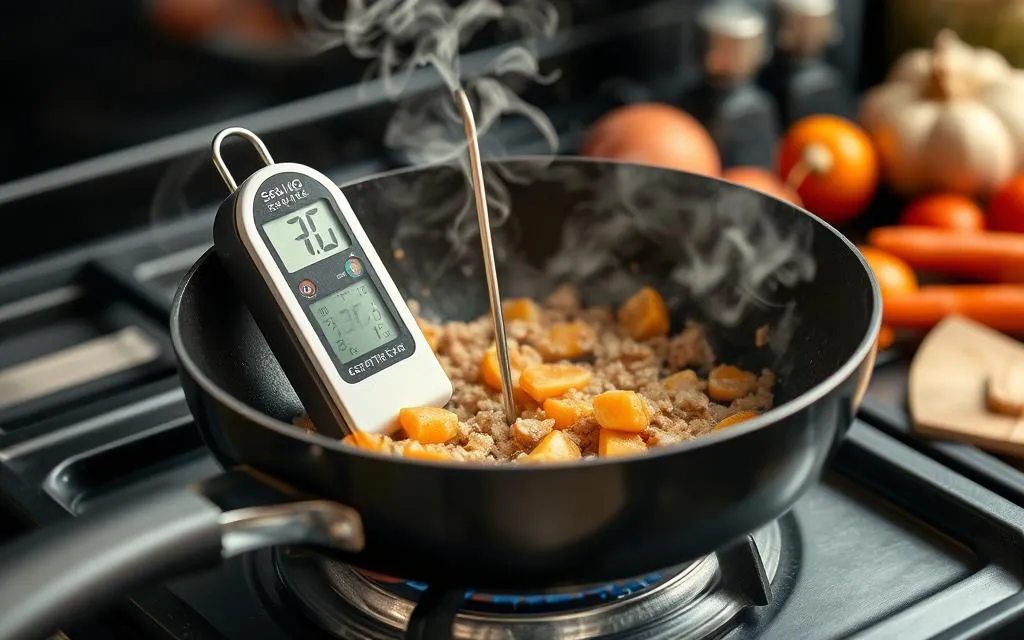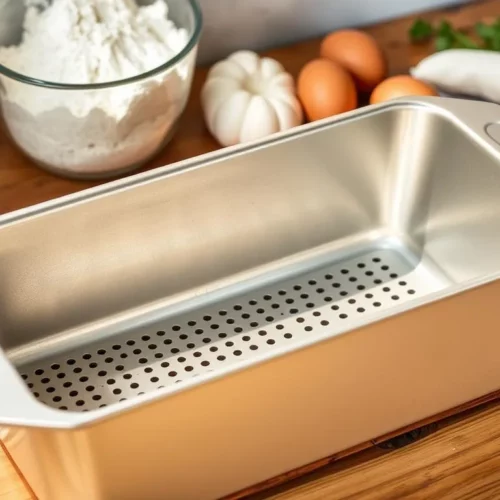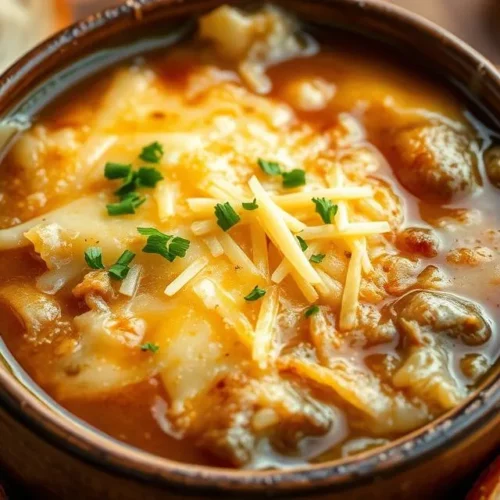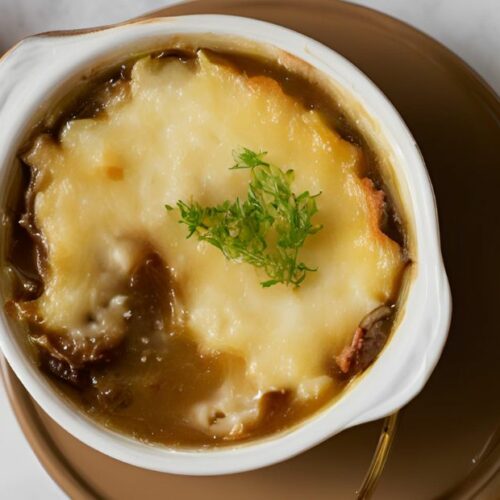Have you ever wondered, Do frying pans need a low specific heat capacity? This question may seem technical, but it’s crucial for anyone seeking precision in the kitchen. A frying pan’s heat capacity affects how quickly it heats up and retains warmth key factors that can make or break your cooking results.
Imagine a pan that instantly reaches the perfect searing temperature. With a low specific heat capacity, your pan heats up fast, ideal for quick-cooking techniques. But is faster always better? For dishes that need consistent warmth, a pan with a higher heat capacity might be the secret to achieving those rich, even flavors.
The choice depends on your cooking style and the results you desire. Let’s dive into how heat capacity shapes your frying pan’s performance and which option best suits your culinary needs.
Understanding Specific Heat Capacity in Cooking
Defining Specific Heat Capacity
Specific heat capacity measures how much heat energy a material requires to raise its temperature by a given amount. In the context of cookware, this measurement directly influences how quickly or slowly a frying pan heats up. Materials with lower specific heat capacities heat up faster, which can be advantageous in many cooking scenarios.
How Specific Heat Capacity Affects Cooking Tools
In cooking, heat regulation is critical. If a pan heats too slowly, cooking takes longer, and food might not cook evenly. Conversely, if it heats up too fast, maintaining control over temperature becomes a challenge. Specific heat capacity thus becomes a deciding factor in cookware selection, especially for frying pans, where precision in temperature control is essential.
The Role of Heat in Cooking Efficiency
Why Heat Transfer Matters in Frying
Heat transfer efficiency determines how evenly a pan distributes heat across its surface. For frying, even heat transfer is vital to avoid “hot spots” where food might burn while other parts remain undercooked. Pans with low specific heat capacity generally facilitate rapid, even heating, which enhances frying performance.
How Temperature Stability Impacts Cooking Results
Maintaining a stable temperature allows for consistency in cooking. Foods cooked in pans with stable temperature profiles are more likely to achieve the desired texture and doneness. Temperature stability also influences how flavors develop during frying, impacting the overall quality of the dish.
Materials Commonly Used in Frying Pans
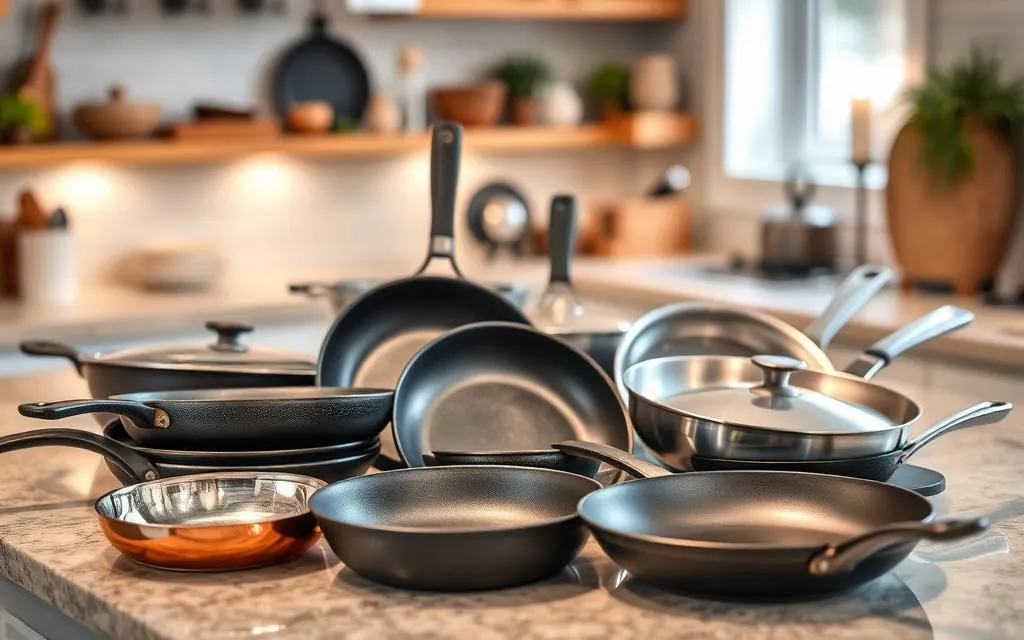
Aluminum and Its Heat Capacity
Aluminum is known for its excellent thermal conductivity and low specific heat capacity, meaning it heats up quickly but does not retain heat as well as other materials. This property makes it ideal for fast, high-heat cooking, where quick adjustments in temperature are required.
Stainless Steel and Temperature Control
Stainless steel, with a moderate specific heat capacity, does not conduct heat as efficiently as aluminum but offers more consistent temperature control. For delicate foods that require a stable temperature, stainless steel pans provide a solid choice despite slower heat response.
Cast Iron’s Thermal Properties
Cast iron’s high specific heat capacity allows it to retain heat exceptionally well, though it takes longer to heat up. For frying applications that require sustained, even heat—such as searing a steak—cast iron’s thermal properties make it an invaluable choice in the kitchen.
Do Frying Pans Really Need Low Specific Heat Capacity?
Benefits of Low Specific Heat Capacity in Cooking
A low specific heat capacity in a frying pan means it can reach high temperatures quickly. This feature is particularly useful in situations requiring quick browning, like frying eggs or searing fish. The rapid heating also reduces cooking time, potentially preserving some nutrients that might otherwise degrade with prolonged heat.
Downsides of Low Specific Heat Capacity in Frying Pans
While low specific heat capacity pans heat up quickly, they cool down just as fast, which can be a disadvantage for dishes requiring prolonged, steady heat. This property makes it challenging to maintain a stable temperature, which can affect cooking quality, particularly for recipes that depend on consistent heat over time.
Comparing Frying Pan Materials Based on Heat Requirements
Quick Heat vs. Heat Retention
For fast-cooking foods, pans with low specific heat capacity, like aluminum, offer the advantage of quick heat. In contrast, cast iron and stainless steel are better suited for dishes that benefit from gradual, consistent heating, such as stews or meats that need time to tenderize.
Best Materials for Specific Types of Dishes
For dishes requiring high heat and short cooking times, aluminum and copper pans provide ideal results. For recipes that need a sustained, steady heat, such as a braise or a slow sear, cast iron’s high specific heat capacity becomes advantageous, allowing heat retention that ensures even cooking.
Practical Considerations in Choosing Frying Pans
Cooking Style and Pan Material
The best frying pan for any individual depends on their cooking style. Those who prefer quick, high-heat methods benefit from pans with low specific heat capacities, while individuals who cook dishes requiring longer heat retention should consider cast iron or stainless steel.
Heat Conduction vs. Heat Retention for Different Dishes
Understanding the balance between heat conduction and retention is essential. For example, high-heat conduction helps in stir-frying vegetables quickly, while heat retention aids in slow-cooked dishes that need consistent warmth over time. Choosing the right material ensures optimal results across various cooking methods.
Maintenance and Heat Distribution Over Time
How Maintenance Impacts Heat Efficiency
Properly maintained frying pans retain their heat conduction and distribution properties over time. A well-seasoned cast iron pan, for example, provides even heating without hot spots. In contrast, a pan with scratches or deformations may lose efficiency in heat transfer, impacting cooking results.
Signs of Diminishing Heat Capacity in Frying Pans
As pans age, certain signs may indicate a loss of thermal efficiency. Warped or pitted surfaces, discoloration, or uneven heating patterns suggest it may be time to replace or refurbish the pan to ensure reliable cooking performance.
FAQs
1. What is specific heat capacity?
Specific heat capacity is the amount of heat energy required to raise the temperature of a substance by a certain amount. In cookware, it affects how quickly and efficiently a pan heats up and retains heat.
2. Do frying pans need a low specific heat capacity?
Not necessarily. While a low specific heat capacity allows for quick heating, some cooking techniques require a pan that retains heat well, making higher specific heat capacity materials beneficial for consistent cooking.
3. What materials have low specific heat capacity?
Materials like aluminum and copper typically have low specific heat capacities, making them ideal for fast cooking methods that require rapid temperature adjustments.
4. What are the benefits of using a frying pan with high specific heat capacity?
Frying pans with high specific heat capacity, such as cast iron, retain heat well, providing even cooking and helping maintain consistent temperatures for longer periods, which is ideal for slow-cooked dishes.
5. How do I choose the right frying pan for my cooking style?
Consider your cooking methods: if you often fry quickly, a pan with low specific heat capacity is ideal. If you prefer dishes that require slow, steady heat, opt for a pan that retains heat better.
6. How can I maintain my frying pans for optimal heat efficiency?
Regularly clean and season your pans, especially cast iron. Avoid overheating and ensure proper storage to prevent warping or damage, which can affect their heat capacity and cooking performance.

